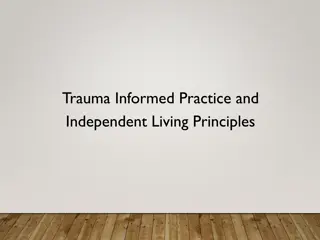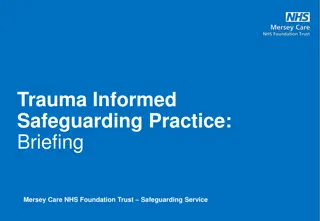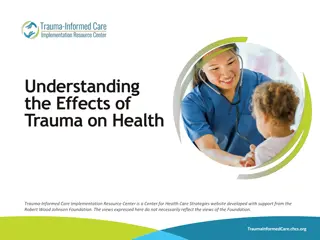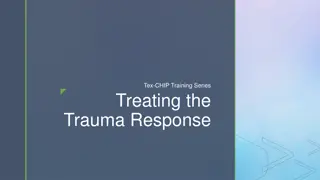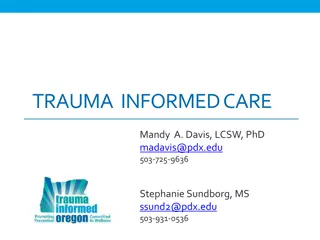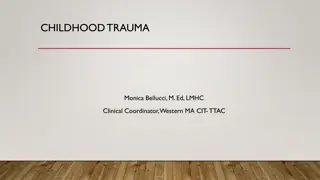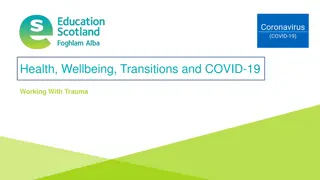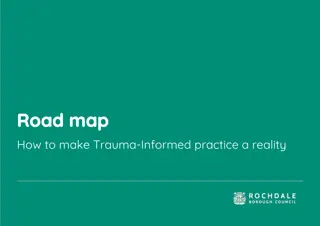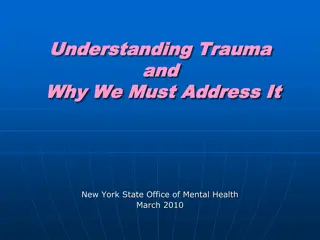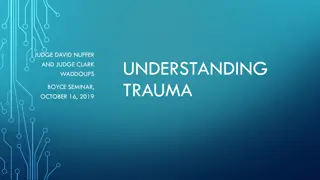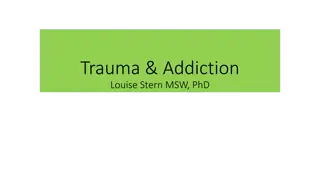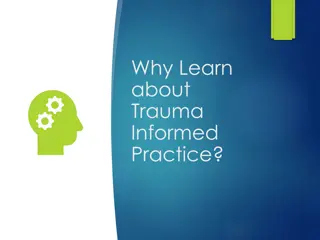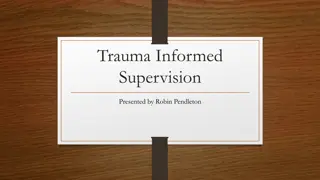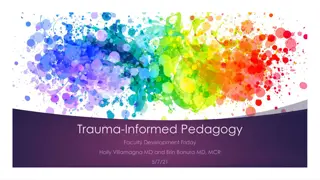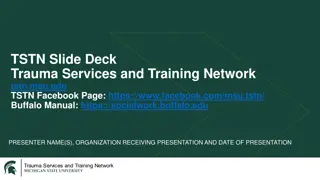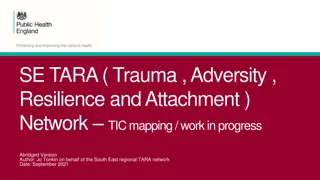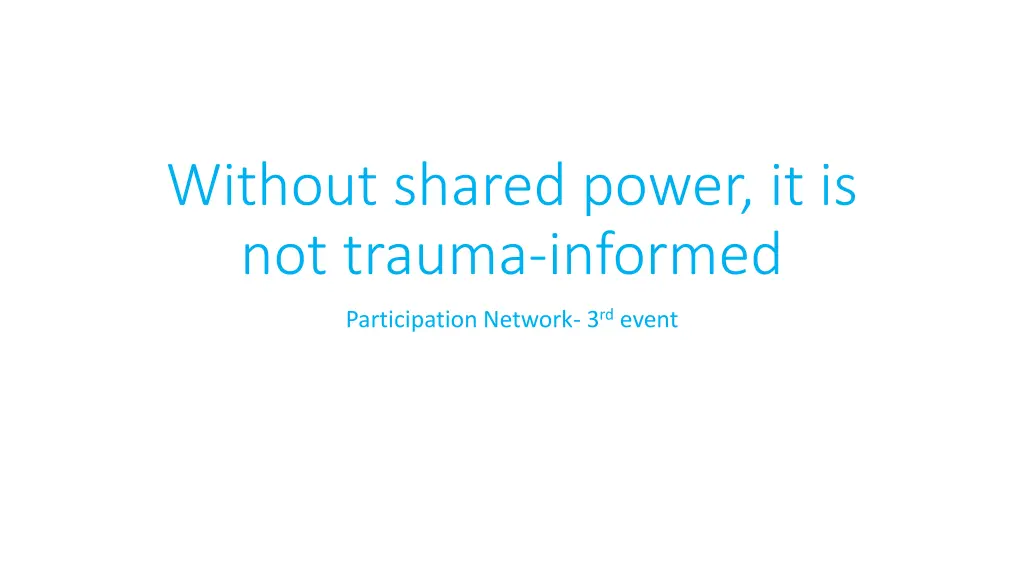
Understanding Trauma and Building Trauma-Informed Environments
Explore the concept of trauma, delve into the importance of being trauma-informed in daily life and work, and discover essential strategies and principles for creating safe and empowering environments. Learn about changing perspectives on trauma and self-care techniques to maintain well-being.
Download Presentation

Please find below an Image/Link to download the presentation.
The content on the website is provided AS IS for your information and personal use only. It may not be sold, licensed, or shared on other websites without obtaining consent from the author. If you encounter any issues during the download, it is possible that the publisher has removed the file from their server.
You are allowed to download the files provided on this website for personal or commercial use, subject to the condition that they are used lawfully. All files are the property of their respective owners.
The content on the website is provided AS IS for your information and personal use only. It may not be sold, licensed, or shared on other websites without obtaining consent from the author.
E N D
Presentation Transcript
Without shared power, it is not trauma-informed Participation Network- 3rdevent
Our Questions What do we mean by trauma and being trauma-informed? What does that look like in our daily lives or work? Can we describe the ingredients for others in the participation network and more widely?
What is trauma? A trauma is a psychologically distressing event that is outside the range of usual human experience. Trauma often involves a sense of intense fear, terror, and helplessness.
Changing the fundamental question from What's wrong with you?" to "What's happened to you?"
Fundamental principles in creating and sustaining Trauma-informed settings ensuring safety establishing trustworthiness maximizing choice maximizing collaboration prioritizing empowerment Fallot and Harris (2009)
Strategies for a trauma-informed training environment Create a safe space Maximizing Opportunities for Choice and Control Fostering Connections Assess emotions and encourage self-reflection
Self-care strategies Be aware of how this work may affect you Stay connected to peers, family and friends Seek out sources of enjoyment and inspiration Consider support for unresolved trauma that may be activated by this work Practice stress management techniques Develop and follow a plan for work-life balance- responses to stress need to be as much organisational as individual Be kind to yourself and appreciate your areas of strength




